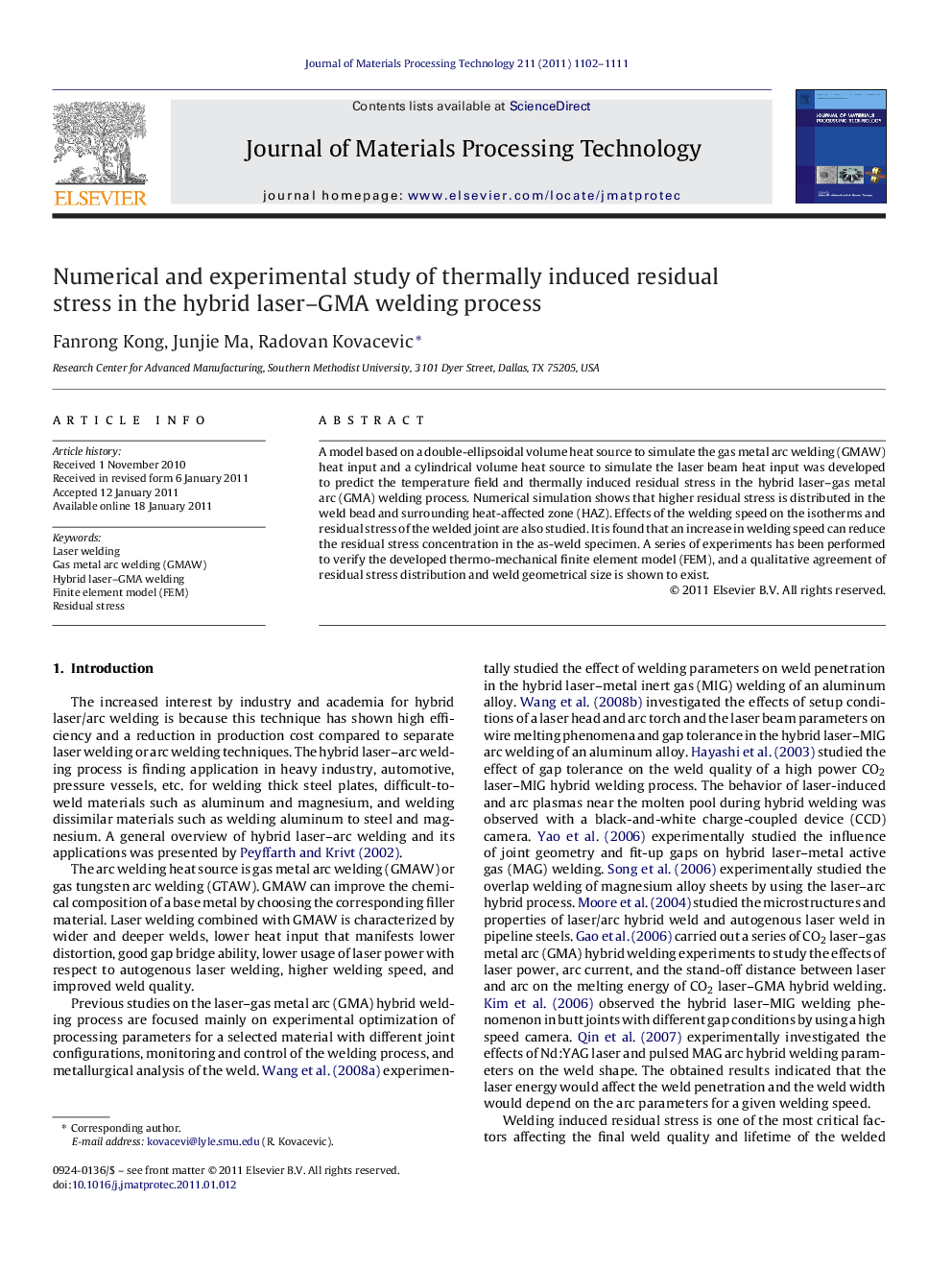| Article ID | Journal | Published Year | Pages | File Type |
|---|---|---|---|---|
| 10417548 | Journal of Materials Processing Technology | 2011 | 10 Pages |
Abstract
A model based on a double-ellipsoidal volume heat source to simulate the gas metal arc welding (GMAW) heat input and a cylindrical volume heat source to simulate the laser beam heat input was developed to predict the temperature field and thermally induced residual stress in the hybrid laser-gas metal arc (GMA) welding process. Numerical simulation shows that higher residual stress is distributed in the weld bead and surrounding heat-affected zone (HAZ). Effects of the welding speed on the isotherms and residual stress of the welded joint are also studied. It is found that an increase in welding speed can reduce the residual stress concentration in the as-weld specimen. A series of experiments has been performed to verify the developed thermo-mechanical finite element model (FEM), and a qualitative agreement of residual stress distribution and weld geometrical size is shown to exist.
Related Topics
Physical Sciences and Engineering
Engineering
Industrial and Manufacturing Engineering
Authors
Fanrong Kong, Junjie Ma, Radovan Kovacevic,
